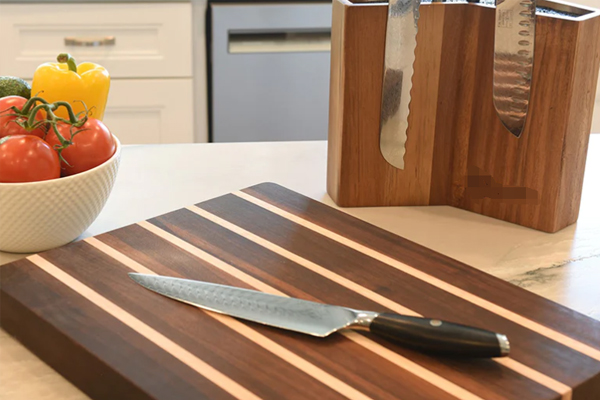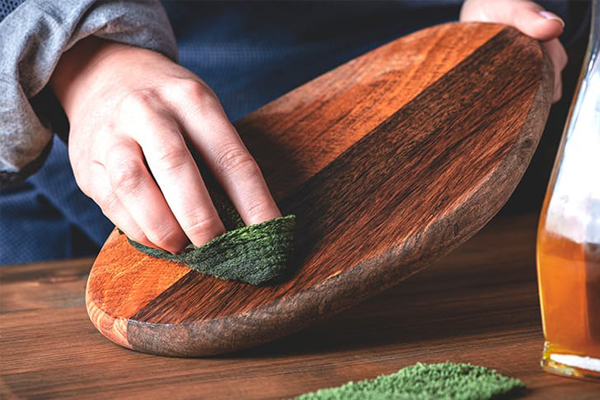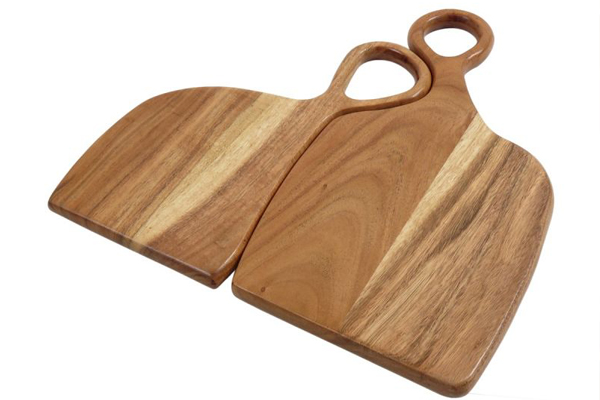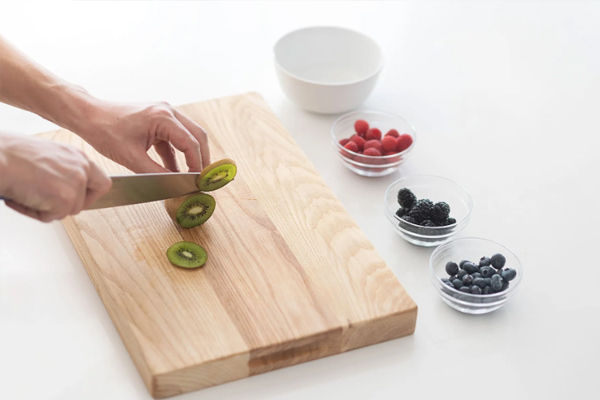However, not all wood is created equal when it comes to chopping boards. In this article, we’ll explore how to choose the best wood for your chopping board to ensure both functionality and longevity.
1. Hardwood vs. Softwood

The first crucial decision when choosing a chopping board is whether to opt for hardwood or softwood. Hardwood is the preferred choice for chopping boards due to its density and durability. Woods like maple, walnut, cherry, and oak are excellent options. Their hardness helps resist knife marks and prevents the growth of bacteria in the cuts and grooves created during chopping.
In contrast, softwood, such as pine, is not suitable for chopping boards. It’s less dense and more likely to develop deep knife marks and grooves, making it less hygienic and durable.
2. Grain Orientation
The orientation of the wood grain in your chopping board also matters. End-grain and edge-grain chopping boards are the two primary options:
End-Grain: Chopping boards made from end-grain pieces are constructed by fusing the ends of wood blocks together. This orientation is considered the best for chopping boards because it’s forgiving on your knives. The wood fibers in end-grain boards absorb the impact of your knife, preserving the sharpness of the blade. They also hide knife marks effectively, giving the board a longer life.
Edge-Grain: Edge-grain chopping boards are made by arranging strips of wood with the grain running along the length of the board. While they’re not as forgiving on knives as end-grain boards, they’re still a good choice. Edge-grain boards are easier to produce and often come at a more affordable price.
3. Hygiene and Maintenance

Hygiene is a critical factor when selecting a chopping board. Wood, when properly maintained, can be as hygienic as other materials. Here are some essential maintenance tips to ensure your wooden chopping board remains clean and safe:
Regular Cleaning: After each use, wash the board with hot, soapy water. Avoid soaking it, as excessive moisture can cause warping. Rinse thoroughly and allow it to air dry.
Sanitization: To sanitize the board, use a mixture of one part white vinegar to five parts water. Apply it to the surface; let it sit for a few minutes, and then rinse.
Baking Soda Scrub: For stubborn stains or odors, make a paste of baking soda and water and scrub the surface with it. Rinse thoroughly.
Oil Application: To prevent the wood from drying out and cracking, periodically apply a food-grade mineral oil or a specialized cutting board oil. This helps maintain the board’s moisture content.
Avoid Cross-Contamination: Use separate chopping boards for different food types (e.g., one for vegetables and another for meat) to prevent cross-contamination.
Avoid Harsh Cleaners: Never use harsh chemical cleaners on your wooden chopping board, as they can damage the wood and potentially leave harmful residues.
4. Size and Thickness
Consider the size and thickness of your chopping board based on your needs. A larger board provides ample space for chopping and food prep, while a smaller one is more convenient for quick tasks. The thickness of the board affects its durability. A thicker board is sturdier and less likely to warp over time.
5. Aesthetics

Wooden chopping boards can be a beautiful addition to your kitchen, so don’t overlook aesthetics. The type of wood and the pattern of the grain can enhance your kitchen’s visual appeal. Choosing a chopping board that complements your kitchen’s design can make it a statement piece rather than just a functional tool.
6. Durability
When selecting wood for a chopping board, prioritize durability. Some woods, like bamboo, are naturally resistant to moisture and bacteria. They are an excellent choice for a chopping board because they are not as prone to warping or splitting.
7. Sustainability
Consider the sustainability of the wood used for your chopping board. Opt for boards made from sustainably sourced wood or bamboo. These materials are harvested in an environmentally responsible manner, ensuring the longevity of the forests they come from.
8. Personal Preference
Ultimately, your personal preference should play a role in your choice. If you love the look and feel of a particular wood, it may be worth considering, even if it’s not the absolute top choice in terms of hardness or durability. You’re more likely to enjoy using a chopping board that you find aesthetically pleasing.
Choosing the best wood for your chopping board is a crucial decision for your kitchen. Hardwood, with an emphasis on end-grain construction, is the preferred choice for its durability and knife-friendliness. Proper maintenance and hygiene practices will ensure your wooden chopping board remains a reliable and safe kitchen tool. Whether you prioritize aesthetics, sustainability, or personal preference, selecting the right wood for your chopping board will elevate your culinary experience and add a touch of natural beauty to your kitchen.


